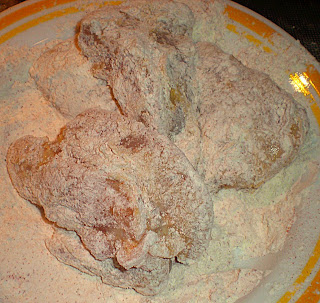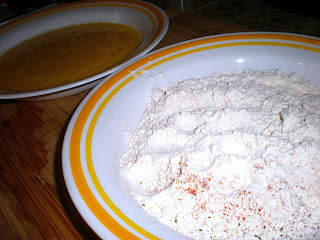 Hoeflich grilled up some ribeyes that "fell off a truck," marinated in bacon fat and garlic...
Hoeflich grilled up some ribeyes that "fell off a truck," marinated in bacon fat and garlic...
and Evil Josh had the brilliant idea of stuffing skirt steak with apples, smoked mozzarella and crushed almonds.
 All of that was tough to top, the Mister's Double Buffalo Sliders stole the show. Even though I'm sure you've already gorged on your share of holiday meats, you're going to want these inside you.
All of that was tough to top, the Mister's Double Buffalo Sliders stole the show. Even though I'm sure you've already gorged on your share of holiday meats, you're going to want these inside you. I apologize for the lack of set-up and prep photos, but the resident photographer may have had one too many drinks. What of it?! Besides, it's not rocket surgery. Chances are, if you read this blog, you know how to mix up a burger.
The Set Up (makes 12 sliders):
1 1/3 lb ground bison
6 oz blue cheese crumbles
1/2 cup bread crumbs
1 egg, beaten
2-3 tbsp hot sauce
2 tbsp melted butter
For the spice mix:
1 1/2 tbsp salt
1/2 tsp black pepper
1/4 tsp cayenne (or more, to taste)
1/8 tsp red pepper flakes
1/4 tsp smoked paprika
1 tsp onion powder
1 tsp garlic powder
1 tsp chili powder
Mix all of your spices together first in a small bowl and have them ready to go. In another bowl, mix up your bison meat, melted butter, hot sauce, egg, spices, then add the bread crumbs and blue cheese crumbles towards the end. You could use more or less bread crumbs depending on how much the meat mixture is absorbing it. The bison meat is very, very tender, so you'll need the bread crumbs and egg as binders.
Form them into 2-3" balls and grill at high heat (about 400-450) for 3-4 minutes per side. The meat is also very lean, so be sure not to overcook it, because it will dry out on you quickly. We served them up on split King's Hawaiian rolls, which had just enough sweetness to balance out the heat, which will sneak up on you like Roman Polanski at a Girl Scout cookie sale.
We created this recipe because it sounded like two food groups that hadn't been adequately combined yet (wings and burgers), because our local butcher always has buffalo meat available - but mostly because Mr. FvF is Native American, and we love perpetuating stereotypes. Sure, he can talk to animals and make corn grow, but I always get a free pass when shit comes up missing because I'm a drunken, dirty Mick and I don't know any better.



























